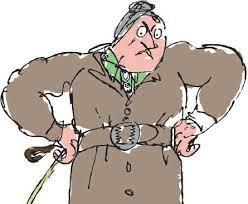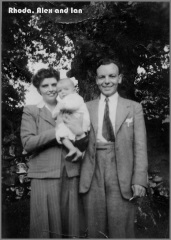The reader may think this whole book is some kind of crazy self-gratifying fiction. So really, is it fact or fiction? I include my school photos here from Sandy and me to show that it’s more fact than fiction. The characters in this story have sometimes been given fictitious names to protect their private identities. The enthusiastic reader can try and identify the real names behind the pseudonyms. It’s not so difficult ha ha.
I haven’t always used pseudonyms – thus, Mr. Hoyle is Mr. Hoyle, but Mr. Jones is not Mr. Jones ha ha ☺ and Jackie Bouchère is not Jackie Bouchère. To give the reader some help in solving this mystery, I include the school photo from 1961 that includes all the villains and heroes.
But to tell you the truth I have warm feelings for every one of these characters although they didn’t always act ethically according to present-day standards (2022). This is hardly to be expected – considering the 60 year period after the event.
Sandy’s School Photos
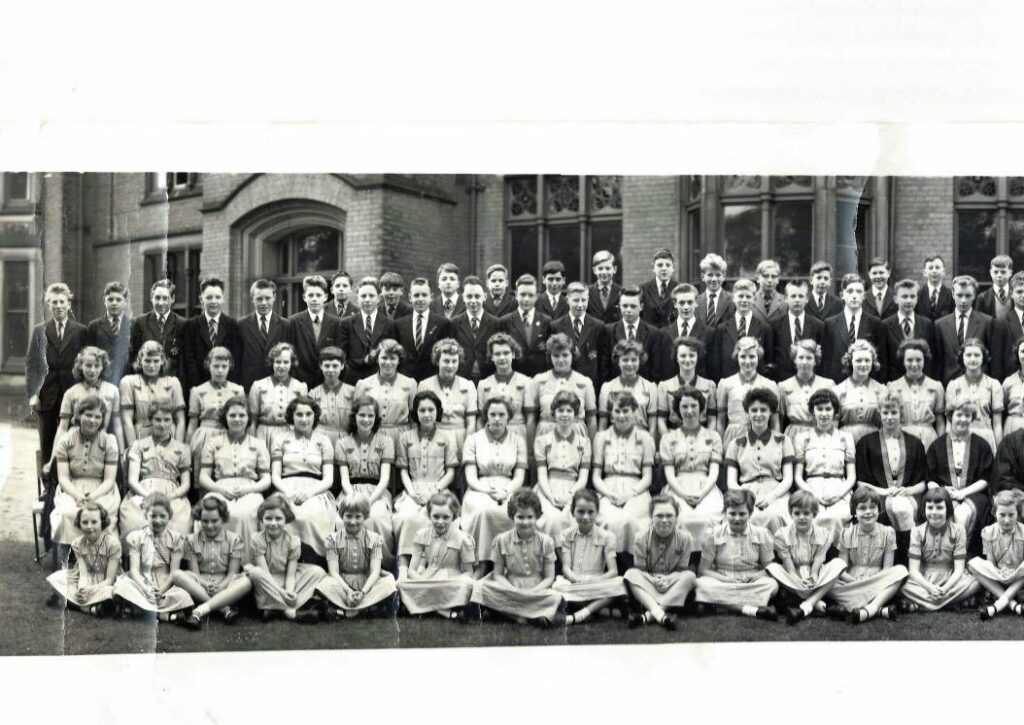
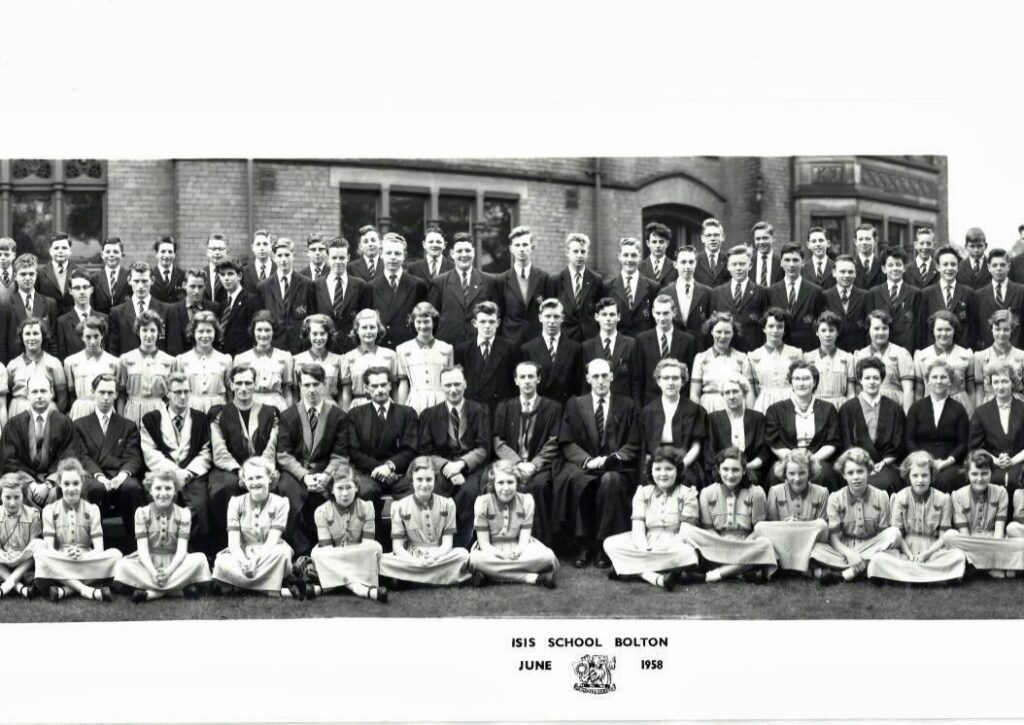
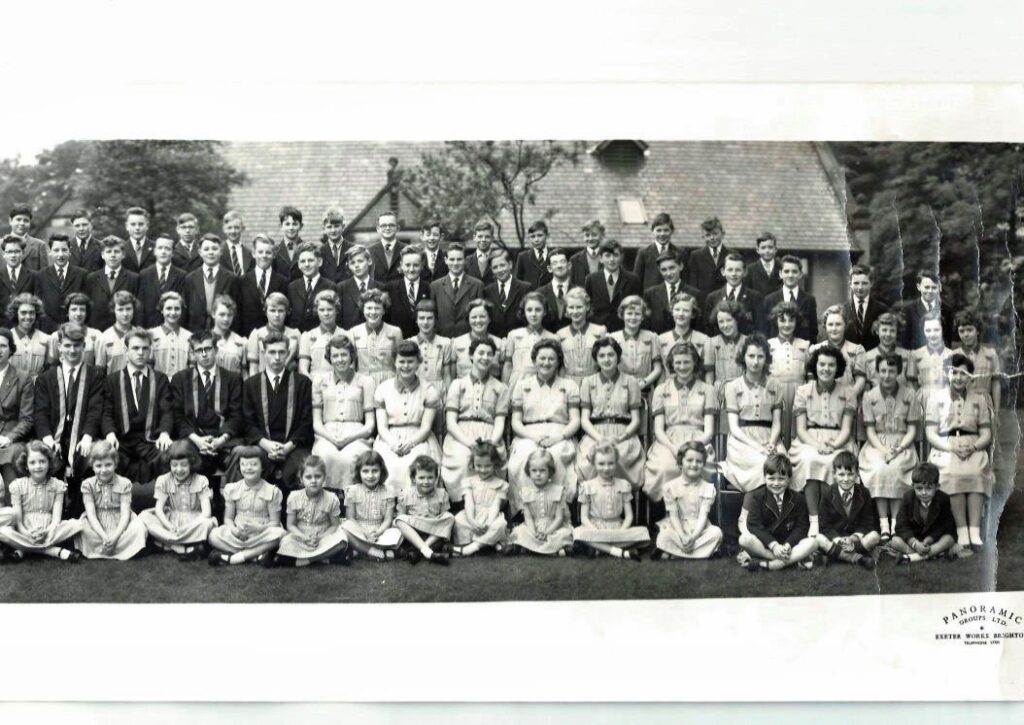
These “Boyhood Recollections” rarely focus on ‘ethnic minorities’ for the simple reason that they were not a prominent part of British society in the 1950s. So I can hardly be accused of ‘ignoring’ these communities. Yet there are authors who use ‘science fiction’ scenarios, such as Rowling in her Potter novels, who choose to ignore the ethnic minorities. I mention this here because as you will see from the school photos, this was the ‘Trumpian’ ‘good old days’ when there were few ‘ethnic’ elements’. At least, it was more of the case in private schools.
Compared to Rowling, like the other present-day science fiction writers, she had fixed her novels to a particular historic date this could be understood. However, the settings in her novels are at best vague; they seem to suggest a post-war reality, at least in the films. Thus, only a few unimportant ‘token’ ethnic characters are included in the films. This seems to be a veiled Trumpian ideology of referring to the ‘good old days’ of a ‘white society’. In that world, there were no ethnic people, trans people, and other deviants.
The Smartest Kid
Ironically, the ace student in our class at the Isis school was an African-American called Morrell. I think he was the son of an American soldier stationed in Britain.
But I remember clearly I didn’t even think of him as an ‘African American’. Morrell was just the smartest kid in the class. He was not interested in girls and fighting, but just focusing on his studies. It is only in retrospect I realise he was an ‘African American’. Children rarely focus on the ‘ethnic origin’ of other children. It is only when the adults point this out to them.
This account may not provide that many insights into life in the 1950s / 1960s for young people. However, I’m fairly certain that my photos of the school’s pupils and the information regarding the Isis School year book provide information that would otherwise have been lost. Despite searches on the Internet, I have found little information regarding the Isis school in the period (ca. 1950-1965). In other words, the lives of thousands of children and tens of teachers during this period.
Interpreting Sandy’s School Photos in 1958 (Middle Part)298
It is perhaps best to let photos speak for themselves. This photo was taken three years before I attended the Isis School. As you can see from the photo, the headmaster, Frank Hoyle, is sitting in the middle with a kind of monkish-style bald head without the front fringe. To his right, or rather left in the photo, is a Mr. Birtwistle. On the other side of Mr. Hoyle, to the right in the photo, is Miss Birtwistle.
Miss Birtwistle
I remember Miss Birtwistle. She must have been in her late thirties or early forties, but hadn’t married. She was a blondish woman with a mild and friendly countenance.
Miss Birtwistle wasn’t one of my teachers, but I can remember she asked me to dance with her at the Christmas party. We danced quite closely together, and she kissed me lightly on my lips. Perhaps she was deputy-head I’m not sure. One can imagine that Miss Birtwistle and Mr Birtwistle were sister and brother, although I don’t know for sure.
Mr. Lucas
To the left of Mr Birtwistle in the photo is Mr. Lucas; I’m not sure who is to the left of him; he might have left the school by the time I attended the school. To the left of the ‘unknown teacher’ is the geography teacher, Mr. Weaver (with a half-fringe covering his forehead). As you can see in the photo, all the teachers are wearing professor’s gowns, as well as some of the prefects.
Sandy
It is perhaps difficult to point out my brother here in the photo, but he is in the second row from the top, to the left, in front and below a boy wearing glasses; my brother also seems to be wearing some kind of badge in his lapel, and he is sporting a kind of Elvis style quiff.
Of course, all the pupils are wearing school uniforms; the boys are wearing trousers and the girls skirts. I seem to remember the colours were blue and silver; that is, the ties were striped blue and silver, and the jackets were blue. Not wearing a school cap was a punishable offence when arriving at, or leaving, the school.
Sandy’s School Photo (left part)
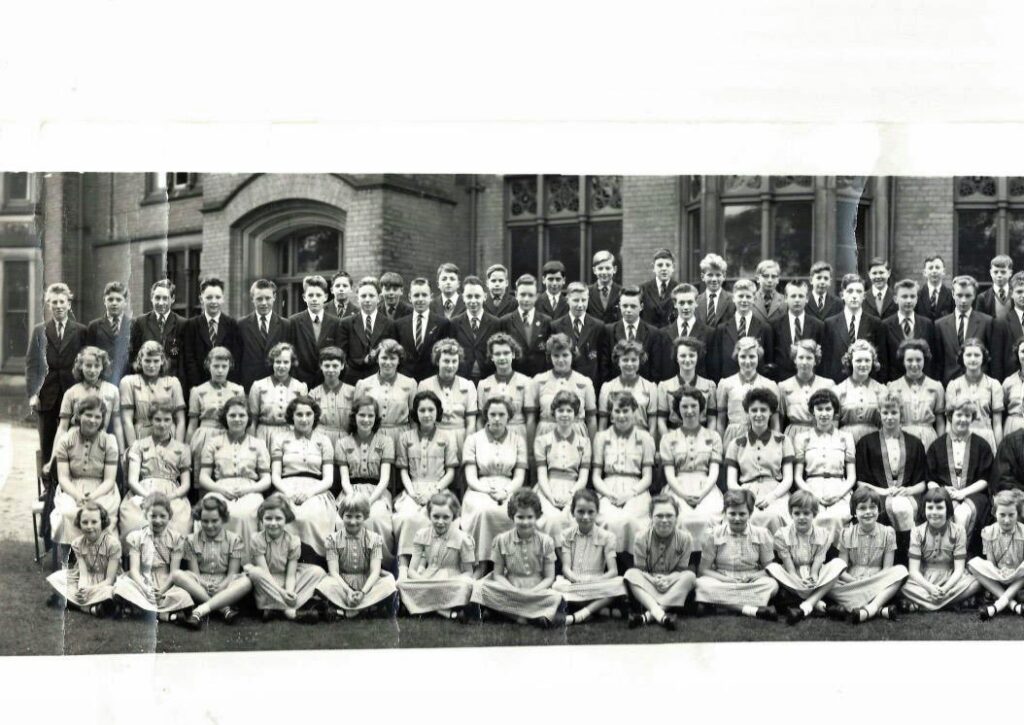
As you can see, the school photo is divided into three parts, so it is easier to view in the A4 format I’m using here. I recognized some of the older pupils in the left part of the photo.
In the top row, fifth from the left is Ronald Skipworth, who had blonde hair (although it looks darker in the photo); he is also wearing an ‘Elvis quiff’ – or should I say a ‘Cliff quiff’, as this is England.
Ronald Skipworth (Link with House System post)
Just as I was starting at the school, Ronald Skipworth was in his last year, and went on to study Economics at Manchester University. I remember him because he was perhaps the best sportsman in the whole school. He was very good at one hundred yards and the long jump. Unfortunately, he belonged to the ‘Windsor’ House, so he gained points for the ‘enemy’ in house competitions, as I belonged to ‘Lancaster’. Three years later he came first in the 100 yards with a time of 10.9 seconds (this time seems to be somewhat optimistic – did they measure out the hundred yards correctly?). He also won the 220 yards and 440 yards.
S. Shorrock
To Ronald’s right (in the photo) is S. Shorrock. Shorrock was also a bit of a sportsman coming second to Skipworth in the 440 yards, second in the high jump, and first in the putt shot and the open mile race. Of course, the Isis, like other schools, tended to favour the physically gifted, so both these boys naturally became prefects in their senior years.
Girls in the Photo
Another interesting thing you can see in this section of the photo is that the girls sitting at the bottom of the photo are perhaps about seven or eight years old, because the school also included a kindergarten. So I recognize at least two of these girls as they continued at the school about three years later joining the same first form as me. The girl sitting eighth from the left is Jacqueline Butcher – the delightful girl I gave a huge box of chocolates to on Valentine’s Day. I think the girl fifth from the left is Janet Greenleigh. She signed my school photo!
What are Quiffs?
In these “Recollections”, I make many references to Cliff, Elvis and ‘quiffs’, so perhaps some explanation is needed for younger readers. Without wanting to get bogged down in a discussion of men’s and women’s fashions, it seems men’s hairstyles (‘quiffs’) were some kind of imitation of the ‘quiffs’ of the 1940s female starlets such as Ginger Rodgers and Jane Russell.
First of all, I imagine that not all readers even know what a ‘quiff’ is. A quiff hairstyle features long hair on the top of the head — with more volume at the front. In other words, women are generally as viewed as being more explicitly sexualised than men. Thus, if a man wanted to exhibit himself as sexually desirable (like some kind of peacock), then what better than to copy the female of the species; although the male peacock is more decorative than the female peacock.
A parallel can also be drawn to the 1960s and the hippie age, when men’s long hair was obviously aping the hair styles of women in an attempt (perhaps unconsciously) to appear more desirable to the opposite sex. Words are often inadequate. Thus, I present a number of ‘quiff’s’ here from the 1940s and 1950s.
1940s and 1950s Quiffs
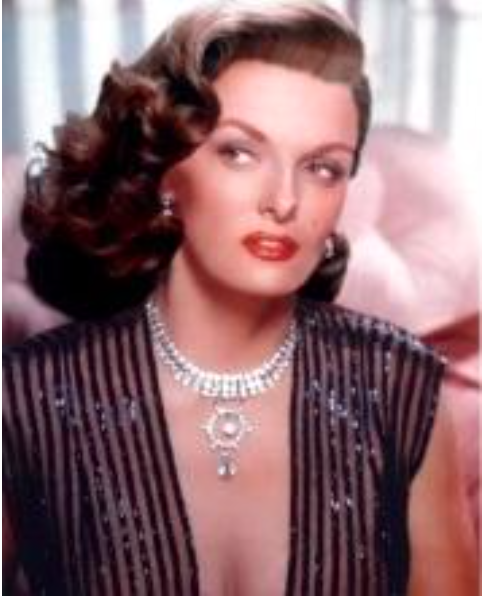
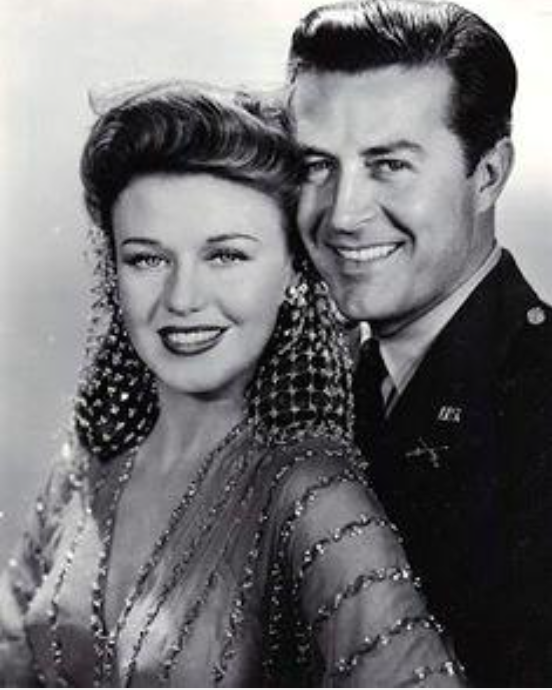
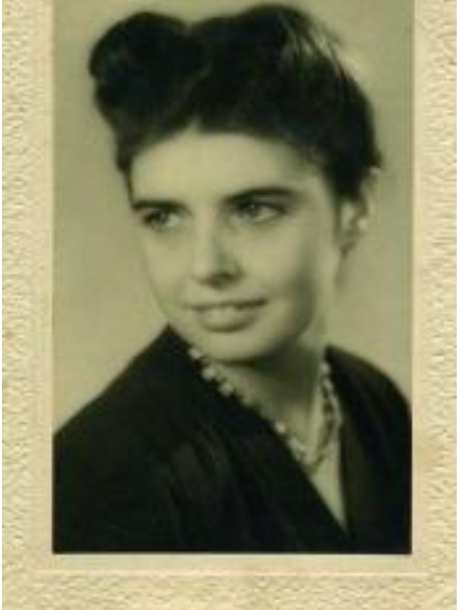
Left is Jane Russell, center is is Ginger Rodgers and Ray Milland, and far right is my mother, Rhoda. She had an impressive ‘quiff’, but she will probably turn over in her grave when I suggest that her quiff resembles an ‘Elvis quiff’. She sported her ‘quiff’ at least 15 years before Elvis presented his ‘quiff’.299 By the way, you can see in the photograph that she is wearing her gold and pearl necklace – the same necklace I ‘borrowed’ when I proposed ‘marriage’ to Susan Buttercup.
Above, you can see the quiffs of Cliff Richard and then Elvis. I won’t enter into a discussion here of the merging of the sexes, as this belongs to the next decades. Perhaps I can discuss this in “Recollections II”.
The School Year Book (1961)
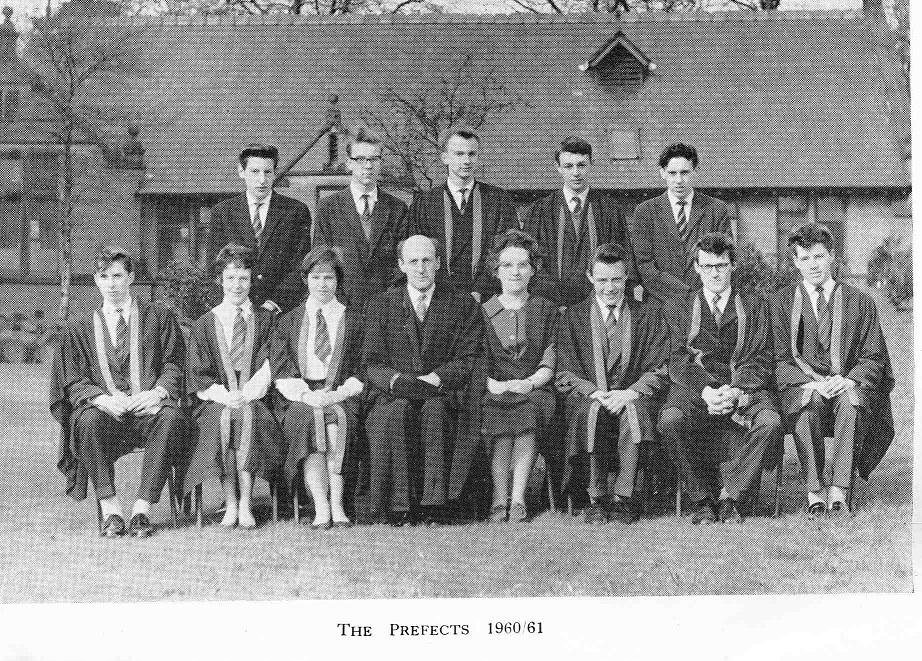
The School Yearbook, aka School Magazine, was published every year or twice a year. These provided a record of school life – the latest news and updates, sports results, and the ‘house’ competition. It also showcased photographs and contributions by the pupils, and so on.
As in the school photo of three years previous, this 1961 photo of the school prefects shows Mr. Hoyle and Miss Birtwistle in the centre wearing professor’s gowns. The prefects are also wearing gowns. To the right of Miss Birtwistle in the picture is Ronald Skipworth; next to him is H. Ogden; and to the far right is P. Shorrock. I’m not sure, but I think the girl to the left of Mr. Hoyle is the head girl, Elizabeth Cooke.
My School Photos (1961)
298 I found these pictures on the Internet – but I seem to have lost the Internet address – it will accredit it at a later date.
299 Comically, my mother was no pop star or film star, but her ‘quiff’ far out-competed the quiffs of the various stars. Not only that, but my mother throughout her life had waist length hair; I knew this because I saw her combing her hair on many occasions. Thus, even in her eighties she kept her long hair and the same 40s hairstyle. Behind her ‘quiff’, she would make her hair into pigtails and ‘wind’ these in a circle at the back of her head (this is a somewhat inadequate description on my part, but then I’m not a woman’s hairdresser!).

